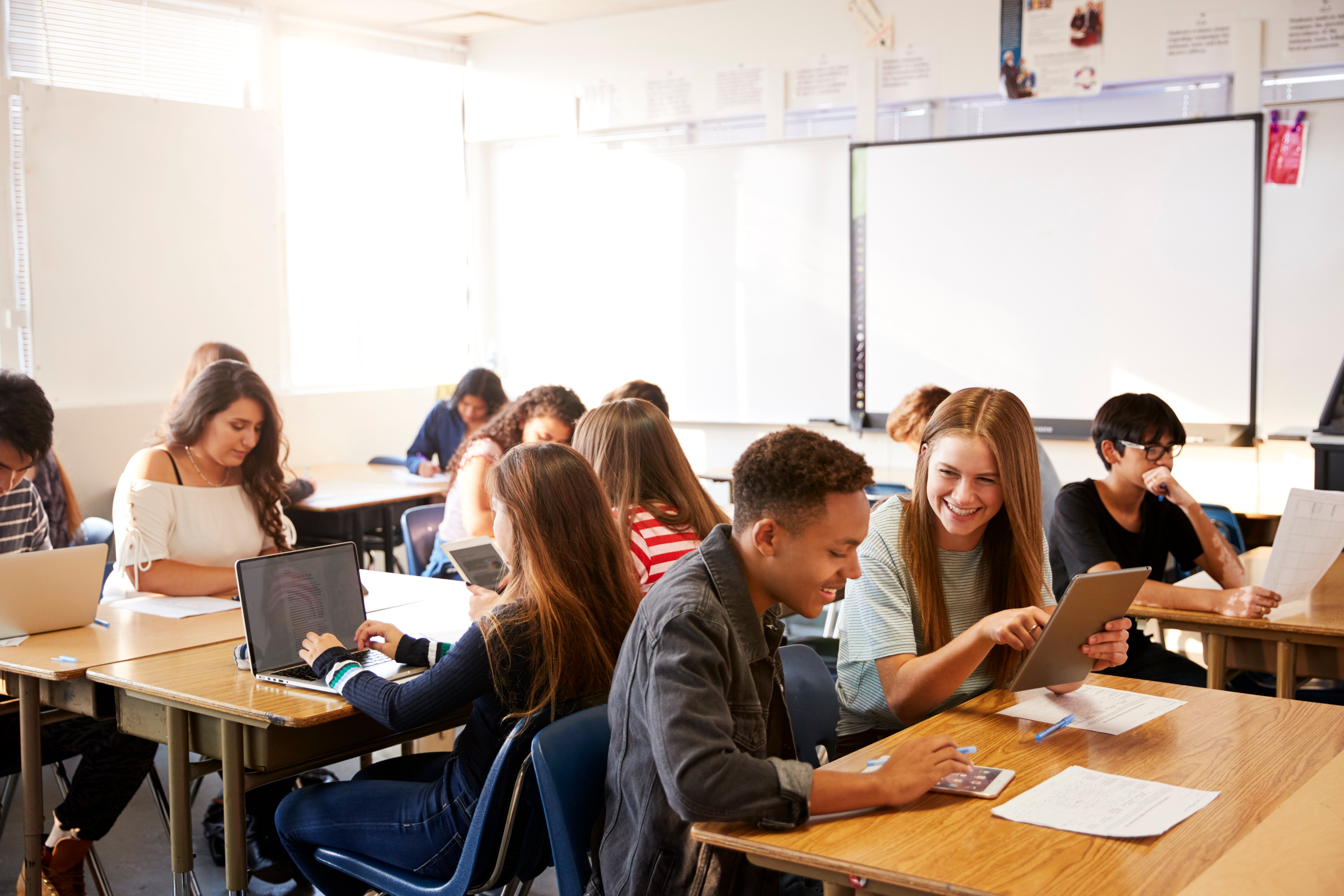
Has your district made the shift to using digital resources and technology in the classroom? Some have and many more are in the process of doing so. This change raises the question: what digital skills do teachers need? Primarily, teachers need training on digital pedagogy, the devices that students will be using, and issues that may arise as a result of going paperless.
Facilitate the Use of Technology
Teachers need to understand their new responsibility to facilitate the use of technology in the classroom. No matter your personal preference, students will use variety of devices, including smartphones, laptops, and iPads. I, for one, am usually at home using the PC platform. Some of you may be using Macs or mobile devices. Yet, now we all have to work with students using all of the above. When teachers are learning about new software that they will be implementing in their classrooms, they should also learn basic digital problem-solving techniques and how these will differ from device to device, depending on what device is used in the classroom.

Using Digital Resources to Enhance Learning
Teachers need instruction on digital pedagogy, or how to use digital resources to enhance learning. Not all software provides the same level of learning or support. The teacher makes the pedagogical choices for instruction in the classroom. The teacher decides what to teach based on state or district curriculum standards. Ideally, the teacher facilitates digital pedagogy to reach all students.
What digital pedagogy does your content software support? Some provide opportunities for students to manipulate answers through a drag-and-drop design, some have opportunities for text interaction that allow students to highlight and annotate. If your content software allows you to conduct a close reading activity digitally, what does this look like? Often, the struggle is teachers not being fully trained to use all the functions of the software.
Going paperless is perhaps one of the most difficult aspects of the shift to technology. For many, losing a physical textbook isn’t appealing. However, with the proper digital resources, teachers can learn how to use digital tools to provide even better learning support for their students. Content software can provide ways for teachers to have ongoing exchanges with students and give feedback about their work. Digital assessments and grading tools are often built-in. It is a matter of practice for teachers to become comfortable and knowledgeable about how to use these resources. In doing so, papers no longer get lost in the shuffle and both teachers and students have a digital record of all correspondence.

Keeping up with Digital Trends
As we move into this new phase of education, teachers have professional learning needs that must be addressed. School or district administrators must provide training and support for the use of a variety of devices in the classroom. While there may be laptops or iPads assigned to everyone, not everyone will remember to bring it to class every day. On those days, some students might be using their individual phones, or some students may need a print version. Whatever the case, it is the teacher who must be able to adapt in the classroom to support the student. Without some digital and technological training, teachers will not be comfortable handling such situations. As teachers receive their new content software, they need to learn how to apply it and some basic problem-solving techniques. Most important of all is the switch from traditional pedagogy to digital pedagogy. As teachers learn to utilize all the wonderful functions that digital can provide, they will be able to grow into the paperless classroom with ease.
Professional learning is at the heart of cultivating digital skills for educators. We must support our teachers as important changes and trends occur in the classroom.
Seeking more professional development resources?
Learn what our professional learning series can do to support your teaching
Pam Gothart has been in education for 22 years including teaching high school social studies, and spent 12 years as a history director. Pam’s Ed.S. is from Samford University, where she focused her study on professional learning. She is passionate about education and helping teachers to be unique and effective leaders.
Pam this is an excellent article. I will be sharing these tips and strategies with my teachers today in our PD meeting.